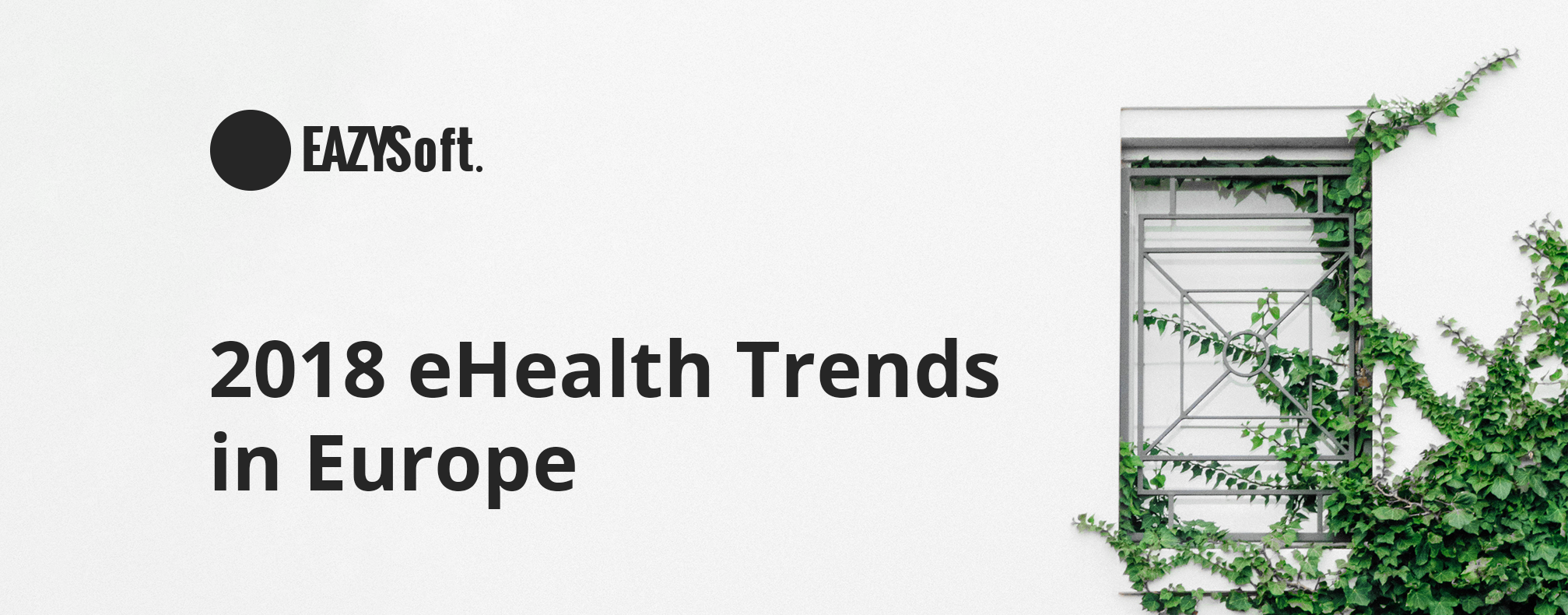
2018 eHealth Trends in Europe
Digital is changing the world, and the healthcare industry is not an exception. Today we can receive a doctor’s consultation without leaving home, buy new medicines directly from our gadgets, get real-time text alerts that our blood pressure is too high, etc. The revolution we see now is not just about replacing people with machines. It is about providing better care to patients, making doctors and healthcare professionals more efficient, capable to take on increasingly complex multiple tasks.
With the fast-paced development of information and communication technology, world countries are in race to apply e-health systems, which promise better and improved healthcare services for individuals and communities.
But what e-health is all about?
E-health simply means the application of the latest information and communication technologies in all health-related fields such as collecting, storing, restoring, analyzing and managing the information in e-healthcare cards. The aim is to achieve stronger and more effective communication with patients and upgrade healthcare services and the entire healthcare sectors. It is all about digitizing healthcare systems and records
Why e-health is important?
E-health means everything will be doable and available online for patients and doctors and the full stop to tons and oceans of paperwork, such as records and files, which swallow a large space of medical centers. This means bigger returns to the country’s healthcare sector, which comes under the pressure of the must-to-do tasks: provide healthcare services, continue doing that all the time and try to make them better and affordable. E-health systems are the password for that to happen.
5 eHealth trends 2018
- Patient Data from Wearables to make a leap forward
Admittedly, this trend is not new. For years, calories have been tracked, steps counted and heart rates measured. But has all this data been accurate? Not really. That’s what’s going to change in 2018. Wearables are stepping out of the wellness arena and becoming devices used in clinical trials and remote monitoring of patients.
- Blockchain becomes a disruptive technology
Initially, blockchain was designed to store transaction data in a secure, traceable and forgery-proof way. In the healthcare industry, one could apply blockchain to things like increased interoperability of health data, improved cybersecurity, result-oriented treatment and reimbursement models, as well as the possibility for patients to make their anonymized health data available for research and receive appropriate benefits in return.
- Chatbots
Chatbots are becoming increasingly important in the digital healthcare sector, providing 24/7 digital support to patients using pre-designed answers. It cannot offer a diagnosis, but it will be there with you, by your side, reminding you to rest and take medicine. Like the world’s most caring digital wonder-nanny you never had!
- AR/VR
Virtual, augmented and mixed reality are helping healthcare practices to adopt new ideas of patient care and equipment maintenance. Experts see potential applications in the treatment of psychological and neurological diseases such as anxiety disorders, as well as the treatment of strokes or phantom pain. Here are just few examples of how these technologies are realized in ehealth: patients can describe their symptoms better through AR apps, nurses can find veins easily with AR, pharma companies can provide more innovative drug information.
- Big Data, Deep & Machine Learning
The great advances in the field of Artificial Intelligence in recent years could lead to fewer cases of misdiagnosis. Intelligent algorithms are now able to compare millions of cases in just a few minutes and/or match image and text databases with existing diagnoses. Based on the treatment data from previous patients, physicians can find the right treatment plan and therapy for new patients more quickly.
Finally, in 2018, one thing will remain constant: the digital health field will continue to grow. We will see more consumer technologies measuring such parameters as heart rate, blood sugar levels, and sleeping trends. Eventually we will see a more cohesive relationship form between doctors and health technology that will ultimately improve patient care.
